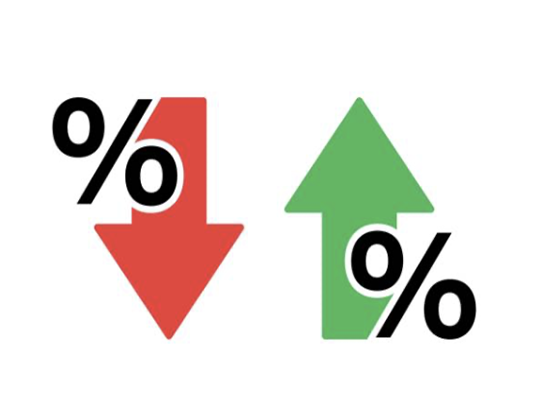How to Improve Return on Sales in Your Crash Repair Centre
Return on Sales (ROS) is a key profitability metric every Crash Repair Centre owner should closely monitor. It indicates how much profit is generated for each unit of revenue (£, $, €) and improving this ratio can significantly enhance the company’s long-term success.
Successful repair centres implement specific strategies to improve their ROS. This blog illuminates five key areas that can drive profitability in a Crash Repair Centre. The overarching approach is to increase revenue and optimise the relationship between operating costs and output quality.
1. Enhance Operational Efficiency & Optimise Processes
Streamlining operations helps reduce costs, minimise waste, and improve turnaround time –contributing to higher profitability.
Actionable Strategies:
1. Implement a Lean Workflow: Standardise repair processes and optimise shop layout to reduce inefficiencies.
2. Reduce Cycle Time: Use pre-ordering for parts, multi-skilled technicians and implement a triage-based repair scheduling system.
3. Leverage Technology: Utilize AI-driven estimating tools (e.g., Audatex, Mitchell) to improve accuracy and speed up assessments.
2. Optimize Pricing & Control Costs
Developing the correct pricing structure and managing expenses efficiently is essential to improving profit margins.
Actionable Strategies:
1. Adopt Dynamic Pricing: Adjust pricing based on repair complexity, parts costs, and local competitor benchmarking. A periodic review of the parts repair versus replacement strategy is also helpful in optimising the gross profit contribution from different work providers.
2. Optimise Gross Profit Per Repair: Prioritize higher-margin repairs, upcharge for specialised services (e.g., ADAS calibration), and perform cosmetic repairs (e.g., wheel trims and minor scratches). Customers are often receptive to additional cosmetic work when the vehicle is being repaired, which minimises customer inconvenience. Segment customer requirements to tailor the customer offer (e.g., offering a VIP service with valet pick-up/drop-off for high-value customers).
3. Negotiate Better Supplier Terms: Establish preferred supplier agreements and leverage bulk discounts on parts, paint and materials.
4. Controlling Costs and Wastage: Reducing paint and consumables wastage on every repair job can significantly reduce overall costs. Quantifying current levels of wastage is the first port of call. The second is diagnosing where and how the wastage occurs in the repair process.
3. Strengthen Insurance & Fleet Relationships
Insurers and fleet contracts provide a steady revenue stream for many crash repair centres. Strengthening these relationships ensures consistent work.
Actionable Strategies:
1. Secure Direct Repair Program (DRP) Agreements: Partner with top insurance companies to guarantee job flow and participate in the OEMs Total Loss Avoidance Program to reduce the loss of borderline repairs.
2. Expand Fleet & Commercial Contracts: Offer maintenance and repair contracts to rental agencies, delivery services, and local company fleets. Local convenience is valuable.
3. Enhance Customer Retention: Implement loyalty programs, repair warranties, and referral incentives. Also, customer feedback through Net Promoter Score programs should be encouraged to identify improvement opportunities. More specifically, analysing the number of customer enquiries to repair estimates to repair conversions to repairs performed is always revealing. This can highlight areas of weakness that directly affect revenue.
4. Improve Workforce Productivity & Skills Development
A skilled and motivated workforce directly impacts repair speed, quality, and customer satisfaction.
Actionable Strategies:
1. Introduce Performance-Based Incentives: Implement a performance-based incentive program that rewards technicians for efficiency and quality work to boost productivity.
2. Invest in Ongoing Training: Offer independent and/or manufacturer-specific training and introduce an internal mentorship scheme to disseminate best practices.
3. Cross-Train Technicians: Develop multi-skilled employees to reduce bottlenecks and enhance repair flexibility.
5. Improve Workforce Productivity & Skills Development
Happy customers translate to repeat business, positive reviews, and premium pricing opportunities.
Actionable Strategies:
1. Enhance Communication: Use automated SMS/email updates to inform customers of repair progress.
2. Monitor Customer Satisfaction: Implement Net Promoter Score (NPS) surveys to gather feedback and make improvements. Share insights with employees.
3. Strengthen Online Reputation: Encourage satisfied customers to leave reviews on Google and social media while addressing negative feedback.
Final Thoughts
Improving RoS in a crash repair centre requires a strategic approach that balances operational efficiency, pricing, partnerships, workforce optimisation, and customer service. No one panacea exists to improve profitability, enhance competitiveness, or ensure long-term growth. Still, typically, the first step is measuring the current ROS and appraising what business and operating model changes should be made. A determining factor in sustainably increasing RoS is the culture – ‘shared values and beliefs on how we do things in our business’ – culture. Everyone thinking about generating revenue and minimising costs always leads to a better outcome than just the business owner doing so.

